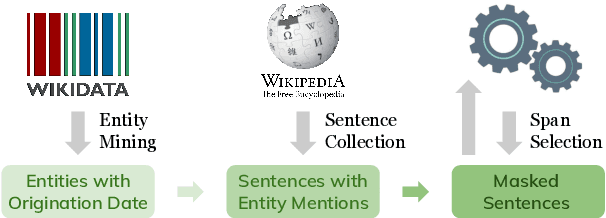Entity Cloze By Date: What LMs Know About Unseen Entities
Paper and Code
May 05, 2022



Language models (LMs) are typically trained once on a large-scale corpus and used for years without being updated. However, in a dynamic world, new entities constantly arise. We propose a framework to analyze what LMs can infer about new entities that did not exist when the LMs were pretrained. We derive a dataset of entities indexed by their origination date and paired with their English Wikipedia articles, from which we can find sentences about each entity. We evaluate LMs' perplexity on masked spans within these sentences. We show that models more informed about the entities, such as those with access to a textual definition of them, achieve lower perplexity on this benchmark. Our experimental results demonstrate that making inferences about new entities remains difficult for LMs. Given its wide coverage on entity knowledge and temporal indexing, our dataset can be used to evaluate LMs and techniques designed to modify or extend their knowledge. Our automatic data collection pipeline can be easily used to continually update our benchmark.
 Add to Chrome
Add to Chrome Add to Firefox
Add to Firefox Add to Edge
Add to Edge